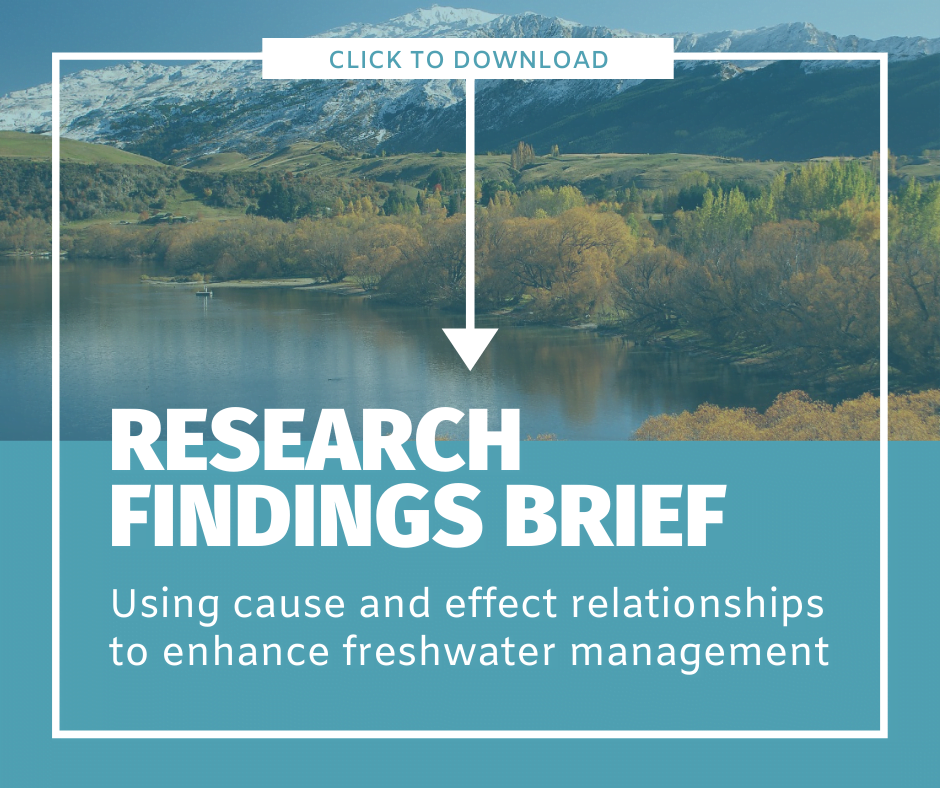Understanding Cause and Effect Relationships in Aotearoa’s Water
We've summarised research on how Aotearoa’s fresh water responds to stressors into a short Research Findings Brief for freshwater managers, regional councils, policy makers, catchment groups and farm advisors. This research can help us manage and restore fresh water, and encourages deeper understanding of complex ecosystems.
We know what we do on land in Aotearoa affects our fresh water, and changing what we do can increase or reduce stressors such as nitrogen, phosphorus, faecal pollution and sediment. But frustratingly, efforts by land stewards to reduce water quality stressors may not lead to a seemingly proportional response in our lakes and rivers.
Research undertaken as part of the Land Use Suitability research programme funded by Our Land and Water identified several different types of these “stressor-response relationships” and applied them to Aotearoa’s lakes. On graphs, these relationships are described as curves, rather than a simple linear relationship (ie reducing nutrients = clearer water).
Different types of lakes appear to have different stressor-response relationship curves, which has important implications for their management. For example, very clear lakes like Lake Taupō are sensitive to nutrient inputs, whereas shallow lakes with extensive native plant communities can assimilate higher nutrient loads before degradation occurs.
For healthy lakes, the research can help identify potential vulnerabilities and tipping points (when a slight increase in stressor can create a disproportionate response). In degraded lakes the research can help predict recovery, and identify situations where lakes may be resistant to restoration efforts.
Understanding a stressor-response relationship curve and identifying where a waterbody sits on the curve can help identify land use intensity levels at which stressor levels become excessive and degrade ecological values, and help forecast impacts of land use change. This understanding can enable more effective early management actions and avoid more costly, undesirable ones.
We've summarised this research into a short Research Findings Brief for freshwater managers, regional councils, policy makers, catchment groups and farm advisors.
Read more in Research Findings Brief: Using cause and effect relationships to enhance freshwater management (7-page PDF)

The research looked at how cause and effect are related in managing freshwater pollution and in restoring water quality, encouraging a deeper understanding of how freshwater ecosystems respond to contaminants.
Using the beautiful Lake Hayes near Queenstown as a scenario example, the research brief describes how this research can be used to prioritise actions to take on land to prevent and reverse degradation.
Environmental management applications for this research include reducing contaminant discharges, evaluating restoration projects, and predicting effects of changes in stressor levels in unmonitored locations and in the future.
The National Policy Statement for Freshwater Management is expected to accelerate regional councils’ identification of stressor-response curves for local water bodies.
This is because water quality targets have associated timeframes, but most stressor-response relationships are not simple (linear). Water quality may respond more or less quickly to changes in stressors, depending on the stressor-response relationship curve. Water quality policy can become legally challengeable or fail if stressor-response relationships are not understood.
___
More information:
- A strategy for optimizing catchment management actions to stressor response relationships in freshwaters (Ecosphere 2018)
- Stressor-response relationships and the prospective management of aquatic ecosystems, New Zealand (Journal of Marine and Freshwater Research 2019)
- The application of stressor-response relationships in the management of lake eutrophication (Inland Waters 2020)
- Quantifying the Extent of Anthropogenic Eutrophication of Lakes at a National Scale in New Zealand (Environmental Science & Technology 2019)
- Evidence for the effects of land use on freshwater ecosystems in New Zealand (New Zealand Journal of Marine and Freshwater Research 2020)
- Land Use Suitability research
Author
One response to “Understanding Cause and Effect Relationships in Aotearoa’s Water”
Delving into cause-and-effect relationships in Aotearoa’s water is a crucial exploration, shedding light on environmental dynamics. Meanwhile, the poetic sentiment expressed regarding the beauty of the lake promises a sensory experience beyond words. Together, they encapsulate the essence of understanding nature’s intricacies and appreciating its aesthetic allure—a harmonious blend of scientific inquiry and poetic appreciation.
 View Our Strategy Document 2019 – 2024
View Our Strategy Document 2019 – 2024




Leave a Reply